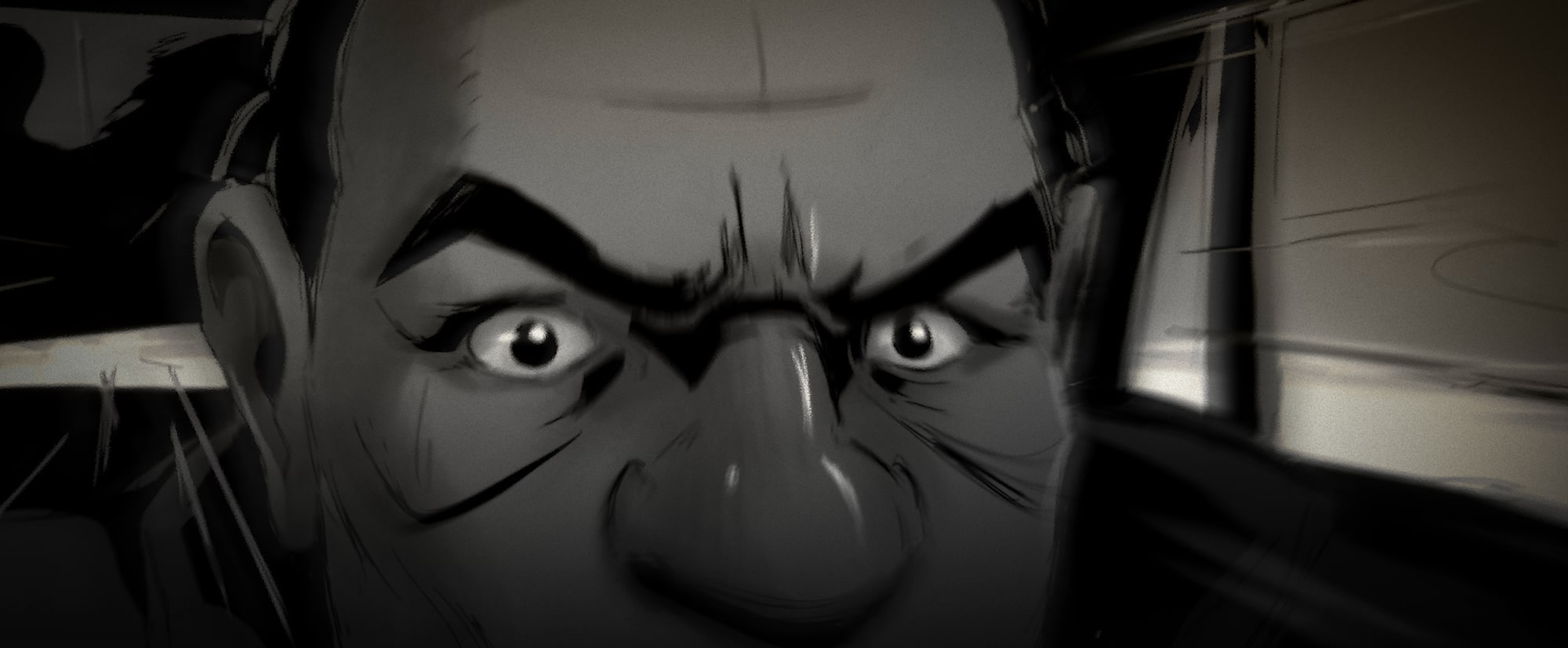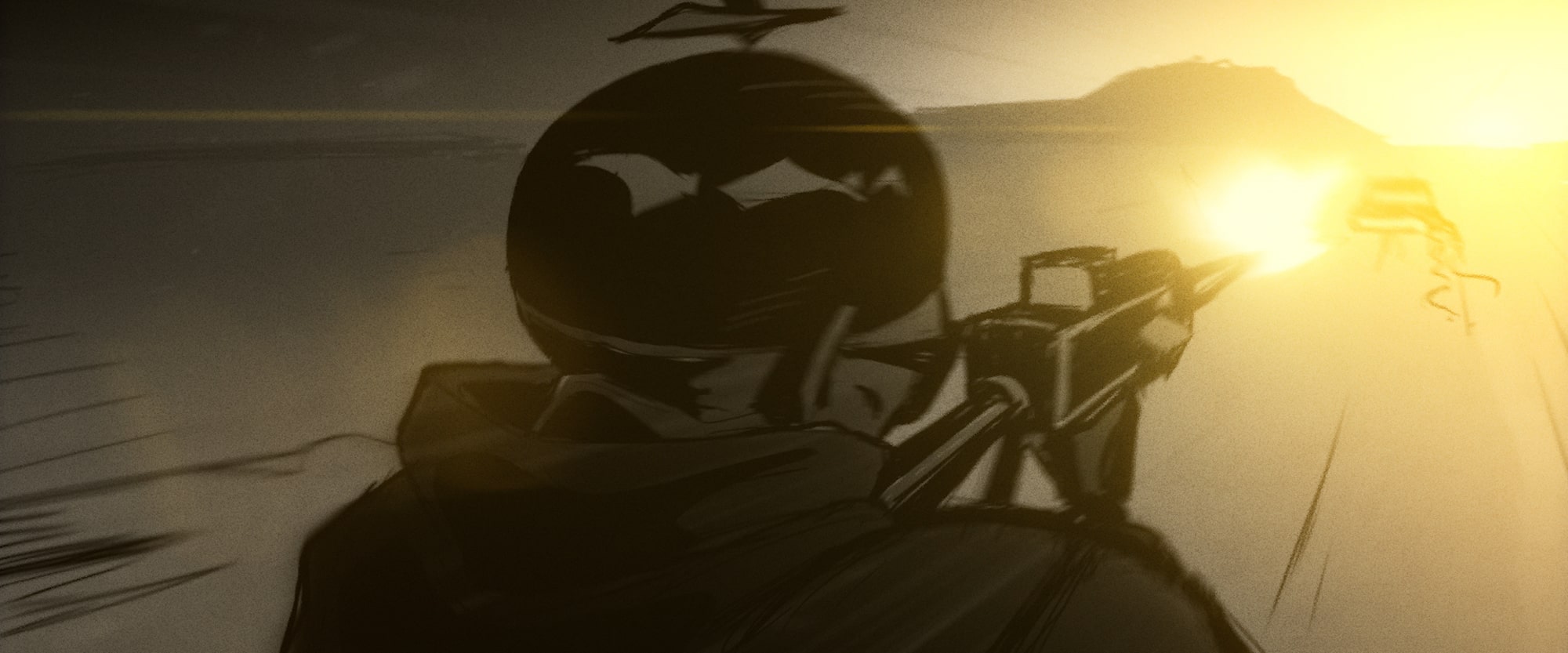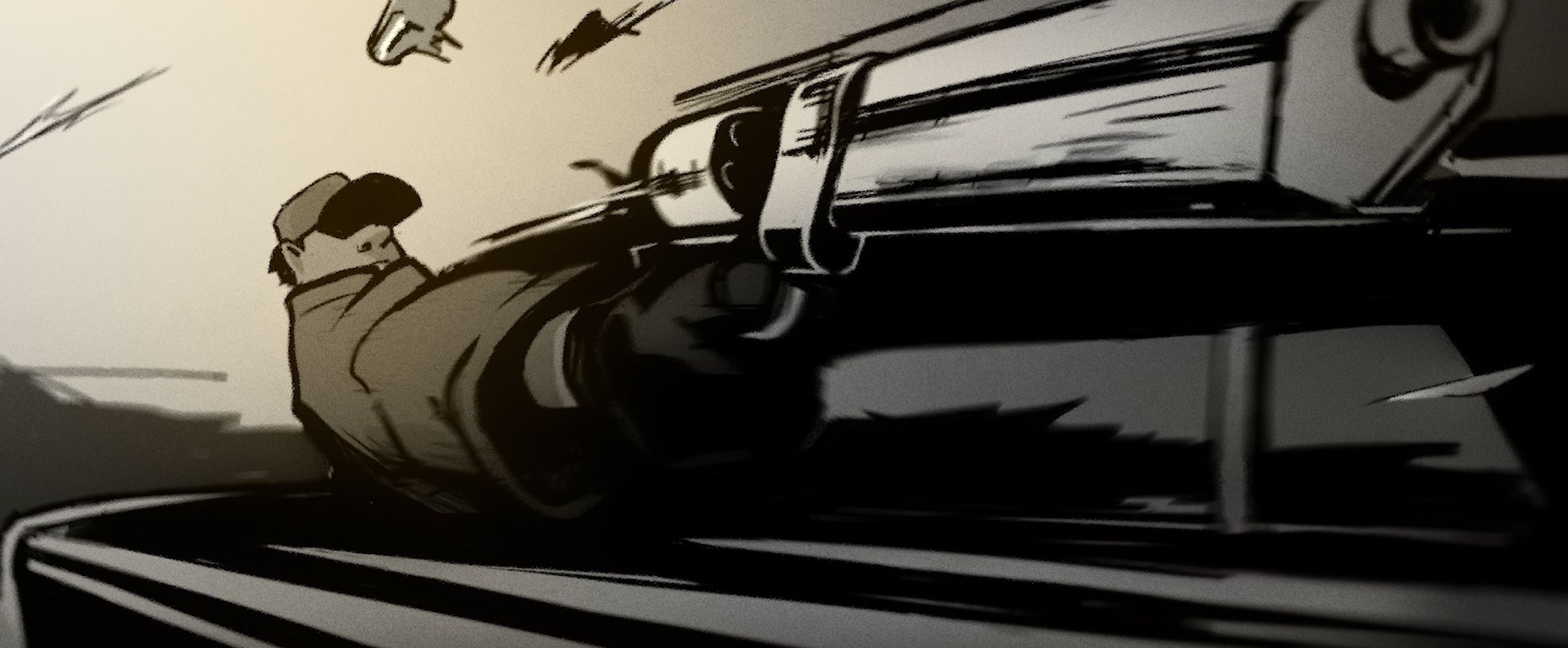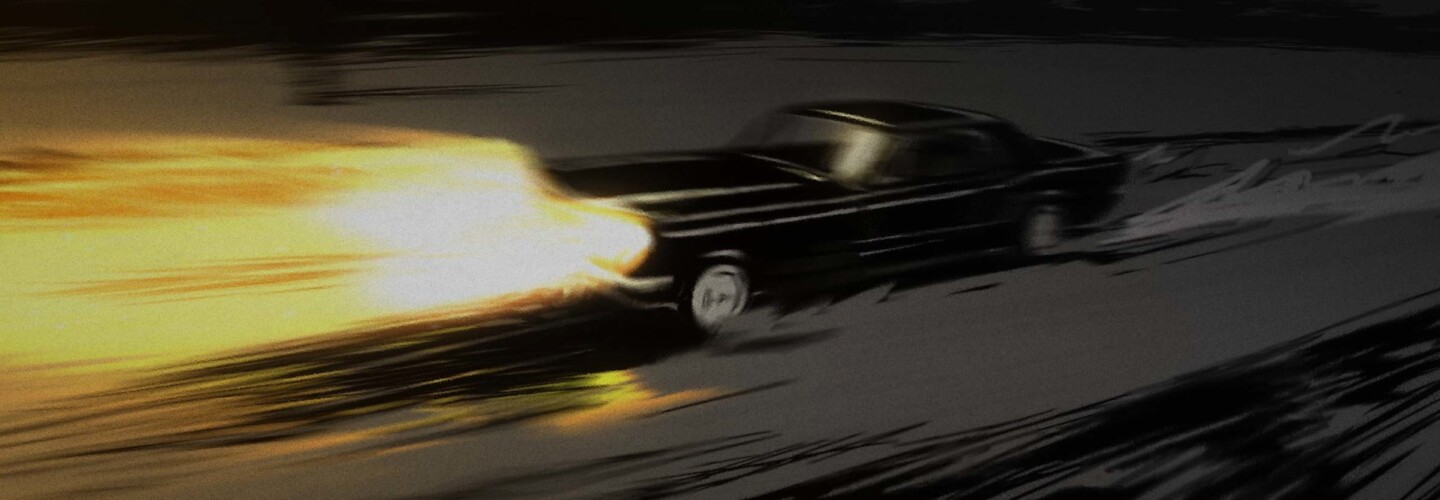
It’s a standing convention among casting directors that if you want to convey a large amount of information with minimal writing, you should simply cast a familiar face. By casting someone familiar, the audience can quickly imagine the backstory of that character. The Rift from Eddy rostered Director Olivier Lescot (last seen on DN here) is a classic case-in-point, a thrilling and kinetic animated car chase that features a very, very familiar face: Tommy Lee Jones. Thanks to this smart choice, we immediately get a sense of a man putting everything on the line, perhaps best encapsulated by Jones’ classic 90s run. The result is a propulsive, entertaining clip that evokes classic action films while also featuring its own quirky sense of artistic creativity and creation. We had the chance to catch up with Lescot for a chat about creating a quick path to realisation, capturing the flow of movement in animation and how Jones represents a particularly old-school ideal of Hollywood acting.
What was the main challenge you gave yourself for the film and what were the steps that enabled you to achieve that?
The concept for this project from a technical point of view was to have the shortest possible path between the emergence of an idea and its realisation, to get away from the classic process of traditional animation which can be a bit arduous and to create a sense of freedom in the animation. In order to keep the freedom and expressiveness of the first drawings, after the first layer of roughs I moved directly to the final drawings, which were then composited.
I love the way that it flows and a large part of it appears to all be one shot. Was this always the intention from the beginning and how technically difficult was that to pull off?
The one-shot sequence immerses the spectator in the action without any breaks, creating a real-time sensation in step with the characters. We take a breath of fresh air as we are immersed in a universe, a particular space of time in the middle of the great snowy plains where the action takes place. However, I wanted to avoid the pitfall of certain sequence shots which don’t really go anywhere, which are more about style than substance. So I thought deeply about the action and where to place the camera so that we are in the most interesting position in relation to the action, and tried to forget about the sequence shot as a means in and of itself.
The one-shot sequence immerses the spectator in the action without any breaks, creating a real-time sensation in step with the characters.
What’s the challenge more generally of capturing movement and gunfire in animation?
The action is not the hardest thing. In animation, it is more the acting and the emotions of the characters that are the most technically demanding. For this project, the difficulty was, just like in an animation with camera movement, to draw the right key poses according to the action of the character and the camera movement. If this is well done, the animation is not more complex than in a still shot.


Tommy Lee Jones is one of the great American actors, but I’m not sure I’ve seen him in an out-and-out action sequence like this. Why did you pick him as the star of your film?
Tommy Lee Jones is a great actor and represents a great range of American cinema, which is among other things the subject of my film. He is known for big blockbusters like The Fugitive or Men in Black, but also for the films of the Coen brothers, or Bertrand Tavernier… and of course some great flops! He also represents a somewhat old school mindset from a former world. He’s a perfect figure to express decline in opposition to a modern world that chases him.
It feels like a sequence inside a larger film, but we are given little context as to the outside world. Why do you think these people are chasing Tommy Lee Jones?
I wanted to give the feeling of landing in the middle of a story, with a past and a future. I think it gives body to the characters and to the story, it gives the feeling that there is a world outside the picture that exists even when it is not filmed. The main character has set foot in a world that is dangerous for him, and he is going to suffer the violence of it, a bit like the average man who watches the major events from afar, but Tommy has enough class to fight.

Were there any particular influences, live-action or animation, that you had for this film?
Here are some of my inspirations: The Coen brothers, Michael Mann, Animatrix, Otomo, Koike, Miyazaki, Mamoru Oshii, Ridley Scott, Georges Lucas, among many others.
We wanted to build a mysterious and strange atmosphere, more like a thriller or horror than a pure action film.
I loved the music, which really helped to aid the propulsive nature of the short. Tell me about your collaboration with the composer?
Fabrice Smadja created the music and sound effects. We wanted to build a mysterious and strange atmosphere, more like a thriller or horror than a pure action film, which the image already expresses. We found it interesting that the music speaks more about the universe and a wider context to enrich the film. Fabrice had the great idea to use string instruments which created a texture and an original touch that helps to give the feeling of a singular universe. Personally, what I like the most while watching a movie is when it’s situated in a specific space and time, an original world where it’s cool just being there, a little bit like when we watch Ghost in the Shell or Blade Runner. The music of Fabrice allows, in a certain way, to create a small world which escapes from the clichés that I also wanted to avoid in the animation and the direction.

It reminded me a little of Sin City in that a large part of it is in black-and-white, but then there are also these occasional splashes of colour. What do you think this choice of colour palette achieves?
The first intention was to make a film in pure black and white, just in drawing. Then I said to myself that with Thomas Ricquier, with whom I often work, we could do something a little cinematographic and give more depth and richness to the image. The main reference, along with Sin City that I had discovered as a teenager, was the intro credits of Raised by Wolves, a series produced by Ridley Scott, with a very carefully constructed image in black and white with points of colours.
What are you working on next?
I’m working on the sequel and a lot of other projects.


